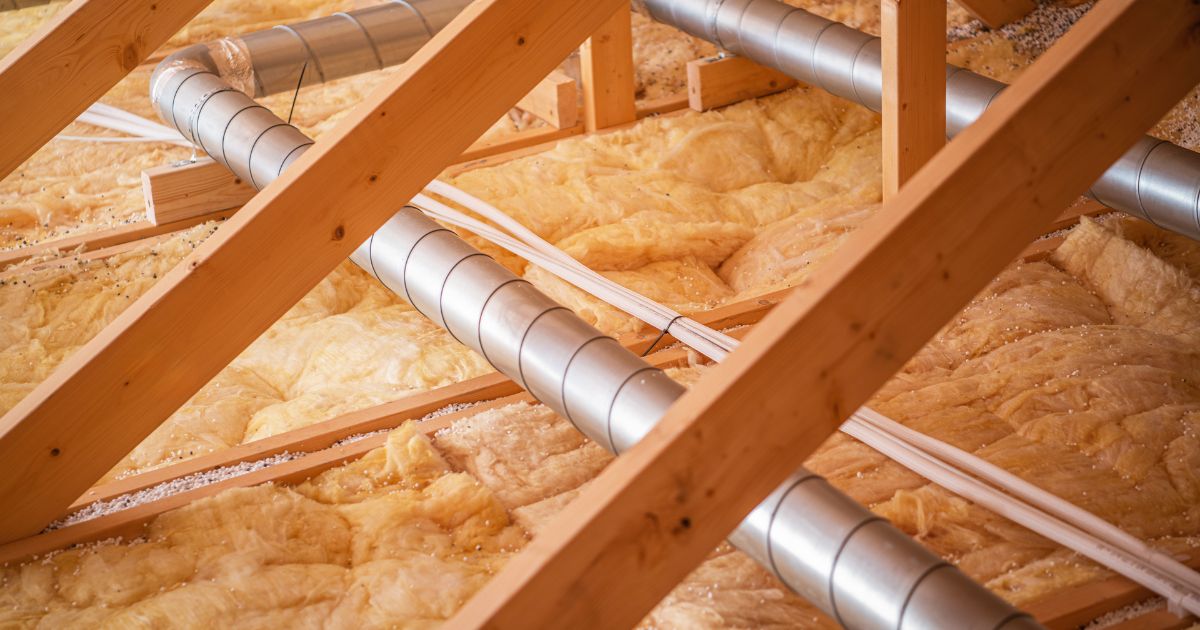Summer in West Michigan brings warm temperatures, high humidity, and plenty of opportunity to enjoy the outdoors—but it also creates the perfect storm for attic mold if your home isn’t properly protected. Mold in the attic is more than just a nuisance. It can cause structural damage, reduce indoor air quality, and lead to expensive remediation costs. The good news? With the right steps, you can prevent attic mold before it ever starts. Here’s how.
Why Mold Loves Summer
Mold thrives in dark, damp, and poorly ventilated spaces—your attic checks all the boxes. During the summer, hot outdoor air meets cooler attic surfaces, creating condensation. Add high humidity, poor ventilation, and insufficient insulation, and you’ve got the ideal breeding ground for mold spores to settle and grow. This is especially true in areas like West Michigan, where humidity levels can remain high for days on end.
Common Causes of Attic Moisture
- Poor Ventilation: Without a balanced system of intake and exhaust vents, humid air gets trapped in the attic, raising moisture levels.
- Bathroom or Dryer Vents Discharging into the Attic: This is a major red flag. These vents should always be routed outside, not into the attic.
- Air Leaks from Living Spaces: Warm, moist indoor air can escape into the attic through can lights, attic hatches, and unsealed ductwork, increasing humidity.
- Inadequate or Damaged Insulation: Insulation helps maintain temperature balance. If it’s missing or compromised, it can lead to cold spots where moisture condenses.
Signs of a Moisture Problem
Look for these early warning signs of attic moisture:
- Musty odors upstairs or in closets
- Dark streaks or spots on wood framing
- Frost or dampness in the attic (even in summer)
- Peeling paint or ceiling stains indoors
If you notice any of these, don’t wait—have your attic inspected as soon as possible.
Summer Tips to Prevent Mold Growth
- Ensure Proper Ventilation
A well-ventilated attic allows heat and moisture to escape. Ridge vents paired with soffit vents are a great solution for balanced airflow. Gable vents can help too, but they’re often more effective when used alongside a ridge/soffit system. - Seal Air Leaks
Use caulk or spray foam to seal gaps around light fixtures, attic hatches, and plumbing stacks. This keeps warm, moist air from entering the attic space. - Check and Upgrade Insulation
Proper insulation not only keeps your home cooler—it helps prevent condensation by reducing temperature differences. Make sure insulation isn’t compressed, moldy, or out of date. - Reroute Bathroom and Dryer Vents
Make sure no vent is dumping warm, moist air into the attic. These should all terminate outside, preferably through the roof or gable wall using a properly sealed vent cap. - Use a Dehumidifier (if necessary)
In extreme cases, or if your attic houses HVAC equipment, a small attic-rated dehumidifier can help maintain safe moisture levels.
West Michigan-Specific Considerations
Due to the lake effect and naturally high humidity, homes in West Michigan need to be especially vigilant. Older homes in Grand Rapids, Holland, or Rockford often lack proper ventilation systems or have aging insulation that isn’t up to today’s standards. Homes with shaded or wooded lots are also at higher risk due to cooler attic temperatures that increase condensation.
Don’t Wait Until It’s a Problem
Once mold has taken hold, remediation can cost thousands—and may require removing insulation, treating wood surfaces, and improving ventilation anyway. By taking preventive steps now, you can avoid those costs and protect your home’s value and air quality.
Final Thought: Prevention Is Always Cheaper Than Remediation
Keeping your attic dry and mold-free doesn’t have to be complicated. With a little planning, some targeted upgrades, and regular inspections, you can prevent attic mold before it starts—even during the muggiest West Michigan summer. If you're unsure where to start, a professional attic evaluation can identify hidden issues and recommend practical, long-lasting solutions.





